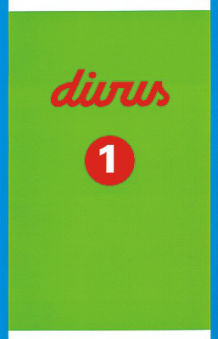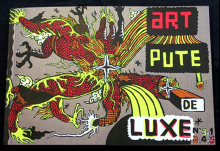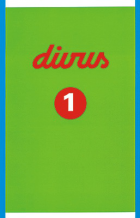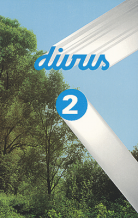Dear Friends, in my short opening speech at the Jelení Gallery, I don’t wish to talk about the exhibition in general. It is too varied for that and it would be hard for me to find aspects common to all the works. I’d therefore like to speak about just one of the exhibited images, which can clearly reveal the process of its creation.
The painting I’m talking about is entitled A Hamper Full of Snakes. On the one hand, it is a product of “recycling” and on the other, of imagination.
The origin of this image goes back to a 20-year-old series of postcards entitled Spring, Summer, Fall, Winter. The series portrays a small boy indulging in various activities typical for each particular season. In the fall, the boy goes mushroom picking, in summer he sunbathes, in spring he strolls under blooming trees, and so on.
I took a liking to the figure for a number of reasons that I can only partially articulate. I liked his simplicity and explicit style, appreciating at the same time that he was somehow familiar, almost typical (as if he were a cartoon star). In its simplicity, this human/robot comes close to being a pictogram. It looks like something mechanical, traveling through a sentimental landscape. The figure’s face, however, radiates unbounded optimism, blended with a naive view of the world. Only one postcard showed the figure in a style that intuitively fit my still half-baked future concept. It was the one in which his position seems to show him at his most neutral, where he is just strolling, going nowhere in particular. It is as if he is levitating in some pure timelessness: He’s walking a direct path to happiness, encountering no obstacles on the way. But this was not a fairy tale: To me, it was as if the boy had come out of the very recent past, even the present — perhaps the 1960s or 1970s. Despite his remarkably economical, childlike style, he was somehow infected with an adult reality. Though he was just an outline — black lines filled with two bright colors, white and light blue — his clothes bore clearly the style of the time. I mean, the turtleneck! A fashionable cap completed his oval, disproportionately large head, and it was not topped with a pompom as one would expect, but with a flower, perhaps a daisy. If the boy were a girl, he would be walking down the catwalk of some kind of post-hippie, or maybe socialist, fashion show. It could be that the figure was not supposed to stand for a child originally, but for a person “as such,” that the “childishness” was not part of the concept of the postcards but was imported as if incidentally during the design process. After all, the figure’s gender is not absolutely defined.
The above, and perhaps some other aspects I don’t recall at the moment, make up the source of my interest in this figure and the reason why I decided to scan the image and save it in my computer while contemplating what to do with it next. I had a character to whom I gradually entrusted in my mind the leading role in my future work.
I needed to create tension, so I was looking for an appropriately powerful match for the potent image of the “boy.” In the end, I didn’t find it in the figure’s stylistic or esthetic aspects but on the level of good and evil — that is, in its ethical aspect. I decided to confront the ingenuous, kind, provocatively optimistic figure with something bad and pessimistic, something evil. My first idea was to add a machine gun swinging on his shoulder, turning the peaceful being into a mindless, marching instrument of war. I was quite entertained by this idea as it suggested further meanings, such as the hippies versus Vietnam, a fashion show versus a military parade, and so on. But a machine gun is not in itself “sheer evil,” and perhaps it is not even a powerful enough image with which to confront the “hope, love and trust” radiating from the idyllic marching figure. I could just as well imagine that the machine gun on the boy’s shoulder was just a toy. Or the boy would become a mere soldier. Neither would produce the desired tension between good and evil. I had to substitute machine guns and rifles with something that would be more universal, and I had to find something that would not make an unambiguous unit with the figure that might be categorized in a simple ideological scheme. Something that would not exactly leave the painting split in meaning, but at least open to various readings and interpretations.
My imagination is sometimes not so wild, and it took a lot of effort to come up with something suitable, but I think I succeeded in the end. Imagination won: I arrived at the idea of the boy carrying with him a bundle of snakes. And what do you carry snakes in if not in a hamper? It’s a funny idea, isn’t it? I was quite entertained by it. And I had hit it, finally! A heavy bundle of sly, evil snakes next to a lightly stepping, ingenuous child, looking ahead with naive optimism. All that was left for me to do was to find the right image for the bundle of snakes, come up with a composition and, if you will, paint them. Having made a few feeble attempts when the snakes either looked too kind or didn’t fit in the hamper, or where they were too far off the boy’s style, I finally found a look for them: square — as if mechanical — heads with greedy poisonous teeth, sinuous bodies like on the Laocoon statue, an S-shaped tale hanging over the hamper. But all these attributes were created in the naive style of the boy’s figure. In contrast to his optimistic navy coloring, the snake hamper is drawn in the more dangerous combination of purple and green.
As to composition, the snakes do and do not belong to the boy. It’s as if they balanced his posture — or represented an unwanted burden on his trip. Despite all its fun, the optimistic figure at once turned into a tragic one, evoking a certain sympathy. If we omitted the sense of sympathy and looked at the entire scene with distant, cold eyes, we would find a different scene. We could imagine the boy to be a suffering child, a mere symbolic messenger bringing bad news. The boy would find himself — perhaps unwillingly — in the negative role of the innocent, smiling figure who is in fact the deceitful carrier of Pandora’s box. Woe betide to whom the message is addressed!
Prague, 13 May 2001
Translated by Vladan Šír




































 We Are Rising National Gallery For You! Go to Kyjov by Krásná Lípa no.37.
We Are Rising National Gallery For You! Go to Kyjov by Krásná Lípa no.37.
Comments
There are currently no comments.Add new comment